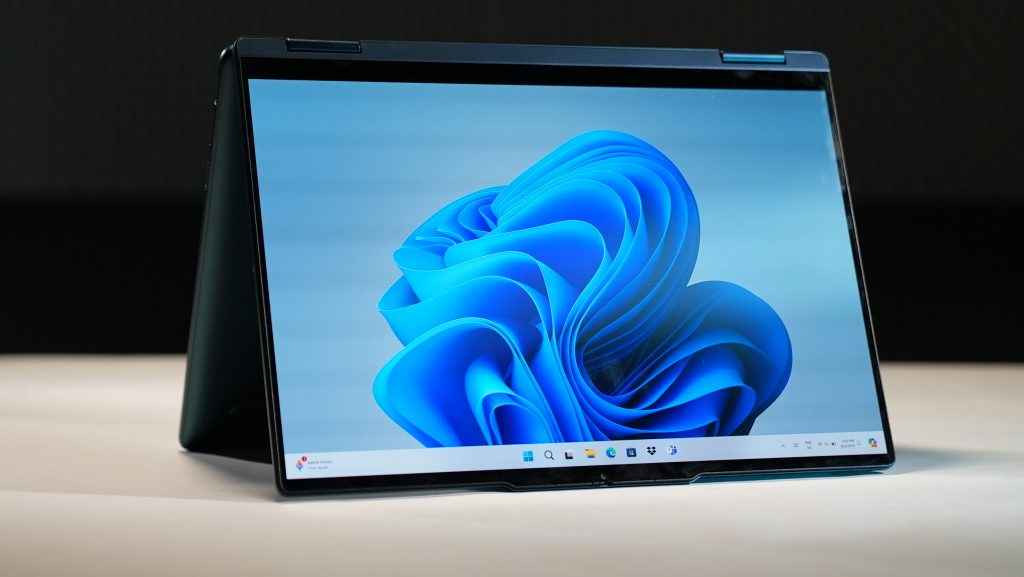The Lenovo Yoga 7 2-in-1 14 combines a convertible form factor with a sturdy build, long battery life, and a capable modern CPU. It is a solid choice for anyone looking for powerful a 2-in-1 laptop for everyday use.
We will add that for ₹85,000, the base variant offers good value for money for what is on offer. While you don’t get the OLED display, the Core Ultra 5 125U in the base variant isn’t that much slower than the Ultra 5 125H in terms of performance. However, the OLED display on the Ultra 5 125H model we tested offers much crisper visuals and vibrant colours. If your use case demands the colour accurate OLED display – such as for photo or video editing, then the premium does shoot up.
That said, at ₹1,01,990 the Lenovo Yoga 7 is still competitively priced when compared to other similarly specced OLED 2-in-1s in the market right now and even manages to outperform pricier competitors.
Positioned comfortably between the lower-end IdeaPad Flex 14 series and the premium Yoga 9 14 series, the Lenovo Yoga 7 2-in-1 14 (2024) is a midrange convertible that promises a blend of performance and affordability. This latest iteration brings some notable external tweaks alongside the anticipated upgrade to Intel’s Meteor Lake processors. Our review unit came with the Intel Core Ultra 5 125H and a 1200p OLED display, priced at ₹1,01,990. The range starts at ₹88,089 with the lower-end variant featuring the Core Ultra 5 125U and a 1200p IPS display. At the top end, you have the Intel Core Ultra 7 155H and a 2.8K (2880×1800) OLED display which is priced at around 1.2 lakhs.
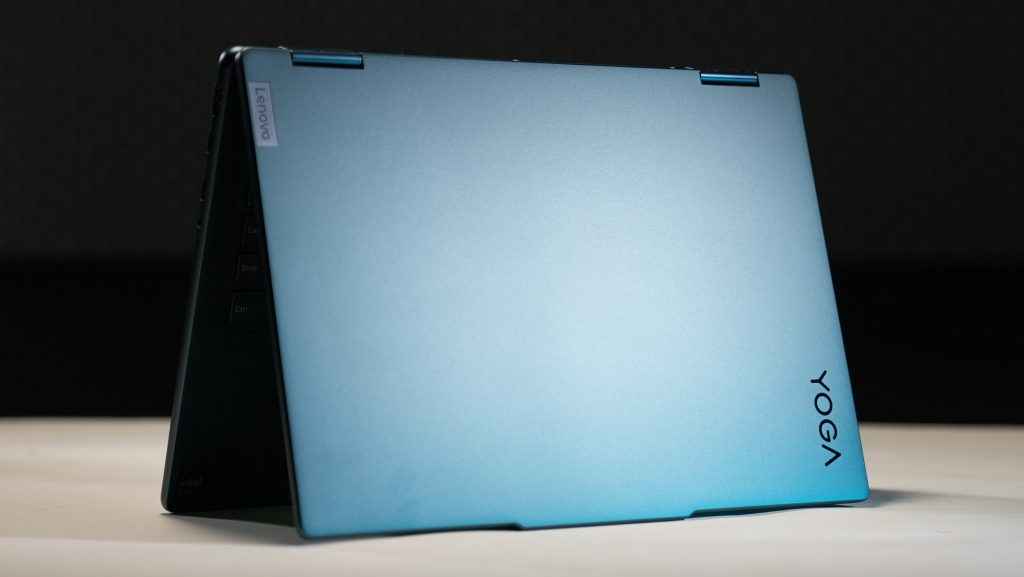
Lenovo Yoga 7 2-in-1 Specs at a Glance
Processor: Intel Core Ultra 5 125H
Graphics: Intel Arc Integrated Graphics
Memory: 16 GB LPDDR5
Storage: 1 TB PCIe SSD Gen 4
Display: 14-inch WUXGA (1920 x 1200) OLED, 60 Hz Refresh Rate, 10-point multitouch glass
Price: ₹1,01,990
Lenovo Yoga 7 2-in-1 Build and Design
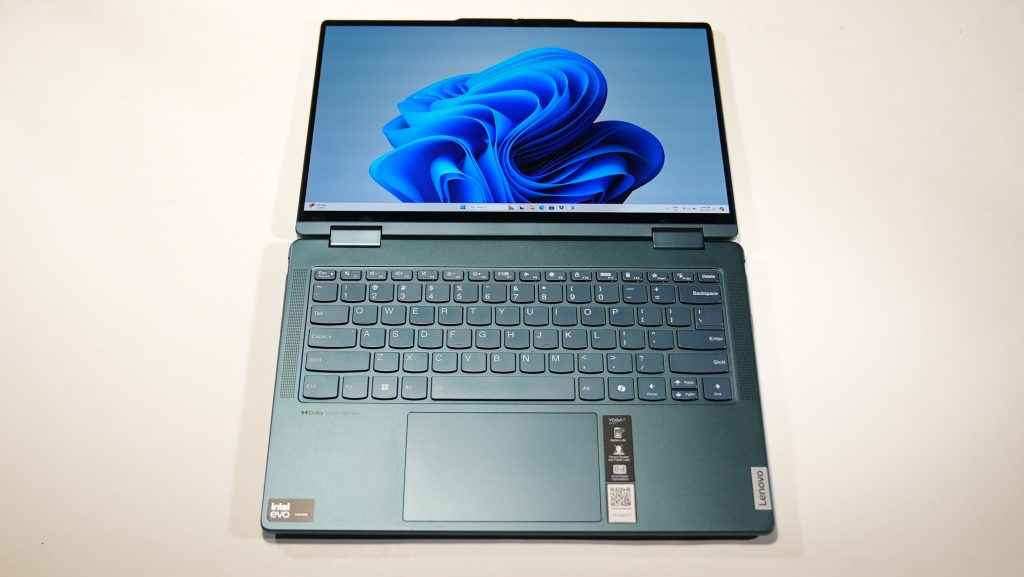

The Yoga series is known for its curved-edge design, something that has carried forward in the 2024 model. While visually similar to its predecessor from the front, the latest Yoga 7 2-in-1 features redesigned ventilation grilles, rubber feet, and speaker grilles at the rear and bottom panel. The build quality remains top-notch, exhibiting excellent rigidity with minimal flex. However, the hinges aren’t as rigid and durable and tend to wobble at wider angles.
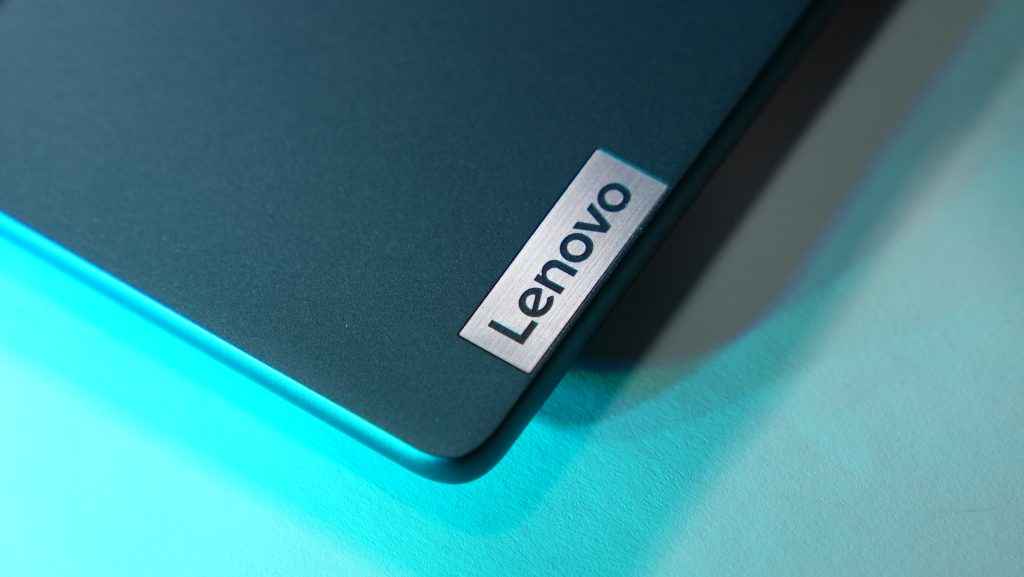

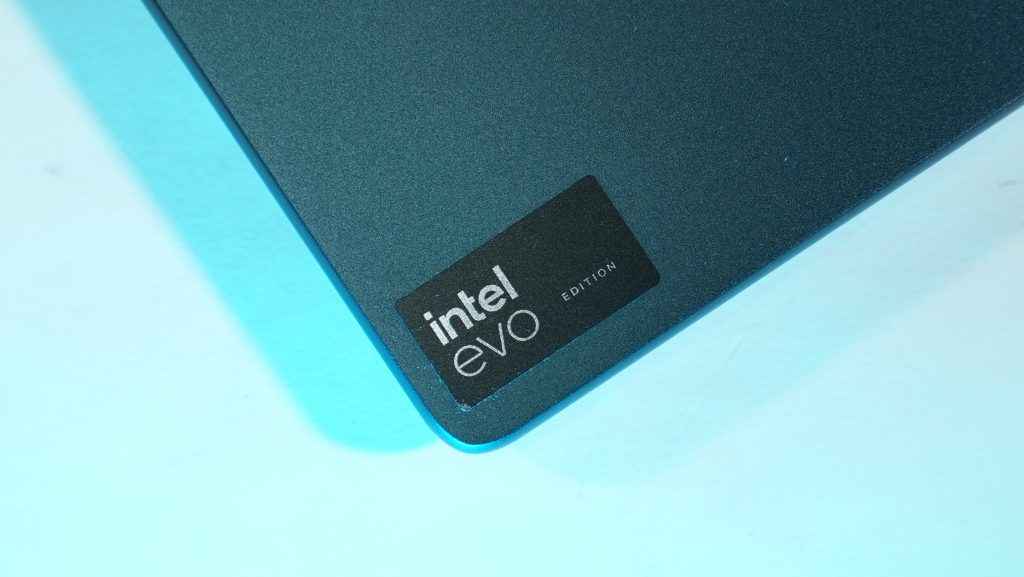
The Yoga 7 2-in-1 14 is also heavier than the premium Yoga 9 2-in-1 14, making it a bit cumbersome for travel. Nevertheless, it’s still in the same ballpark as other 14-inch convertibles in the market as far as weight is concerned.
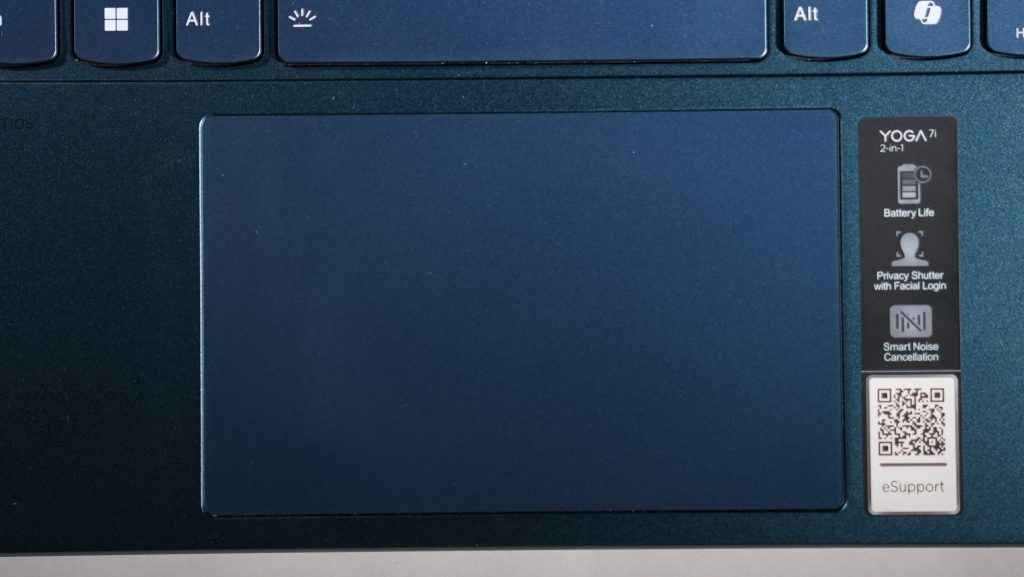

Coming to the keyboard and touchpad, the keyboard on the Lenovo Yoga 7 offers a decent experience overall. The keys are on the shallower end, with soft feedback. We would have liked more tactility but what is available is adequate. The touchpad dimensions remain the same as last year at 12 x 7.5 cm. The touchpad performs well, and clicks have loud and responsive feedback.

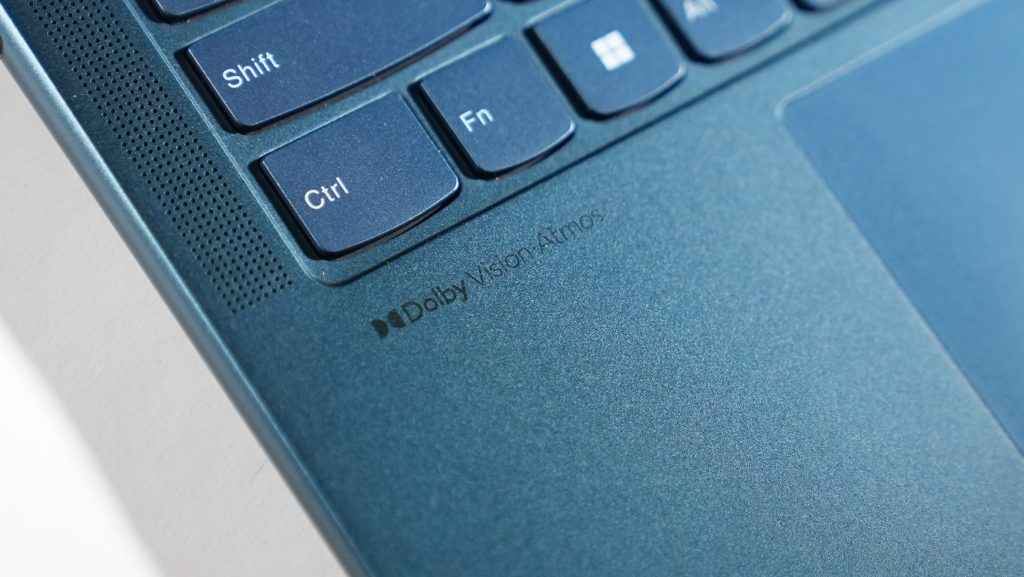
Connectivity
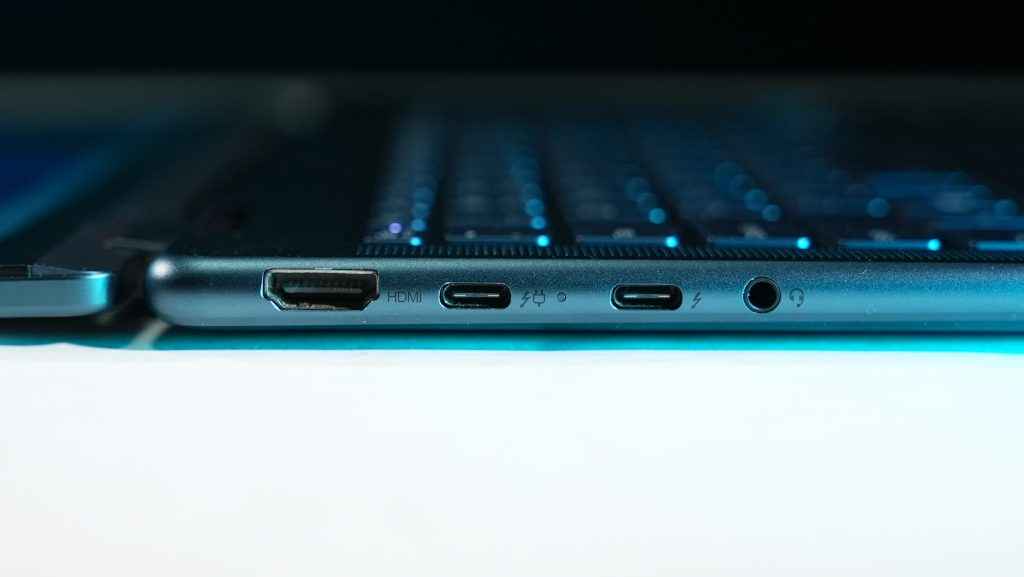

Lenovo has retained all the ports from the previous model, though in a new arrangement. The inclusion of dual Thunderbolt 4 ports is great, but their placement on the same side limits flexibility for charging and connecting external displays. You also have only a single USB-A port; more would have been nice. Other than that you also get an HDMI 2.1 port, a 3.5mm audio combo jack and a microSD card reader.
Lenovo Yoga 7 2-in-1 Display
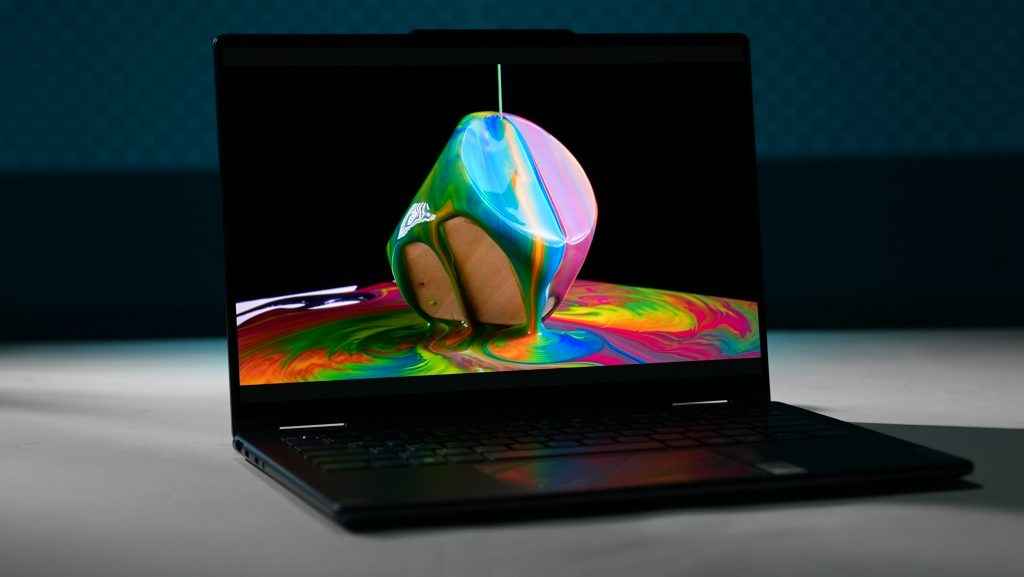
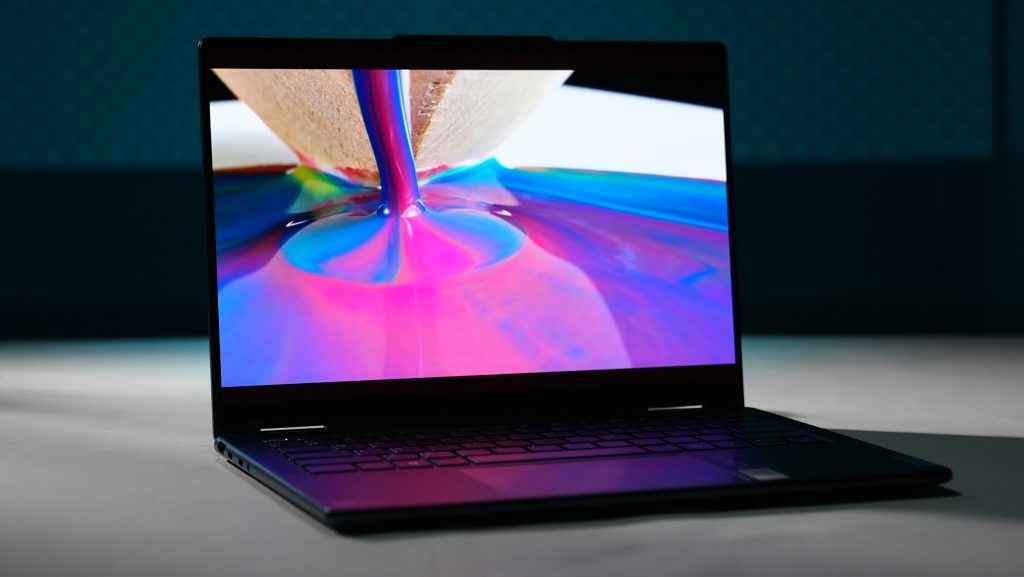
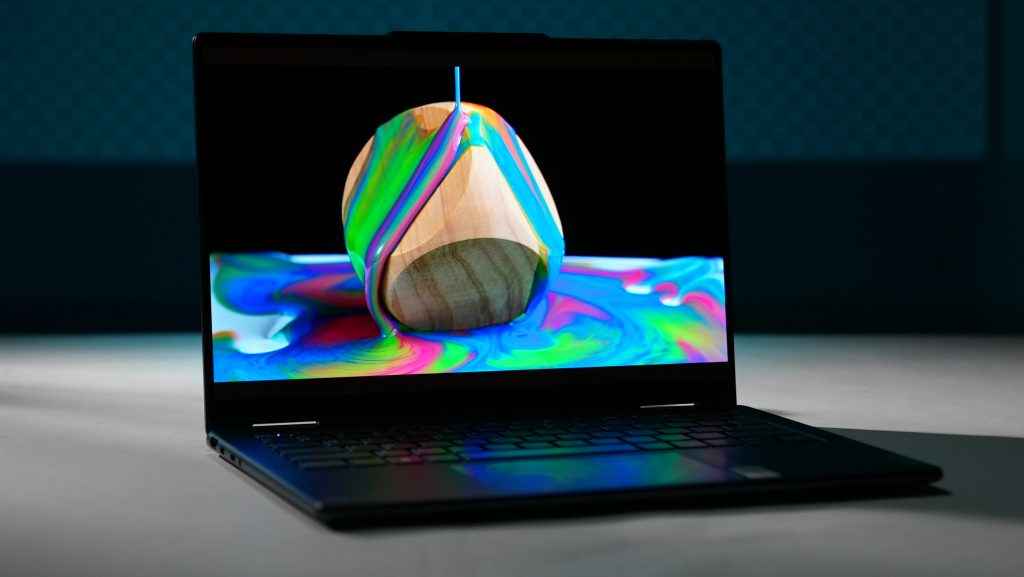
The Yoga 7 2-in-1 offers three touchscreen options: A 1920 x 1200 IPS panel at 60 Hz refresh rate, a 1920 x 1200 OLED panel with 60 Hz refresh rate and DisplayHDR which is featured in this review unit, and finally the 2880 x 180, OLED panel at 120 Hz refresh rate and DisplayHDR. The price difference between the panel variants is pretty significant, with the base variant costing around INR 85K, and the switch to OLED immediately bumping the price up to around INR 1 lakh. That said, the difference in visual quality is also pretty significant. We tested 100 percent sRGB and 99.3 percent DCI-P3 colour gamut coverage on the 1200p OLED panel, which is excellent. Coming to brightness, we tested a peak average brightness of 395 nits. While this will suffice for indoor usage, the display will struggle in bright outdoor environments. This isn’t an unlikely scenario for a 2-in-1 that might also be used as a tablet. Something to keep in mind.
Lenovo Yoga 7 2-in-1 Performance
The Core Ultra 5 125H processor in our review unit offers good performance, easily outpacing the previous generation’s Core i7-1355U.
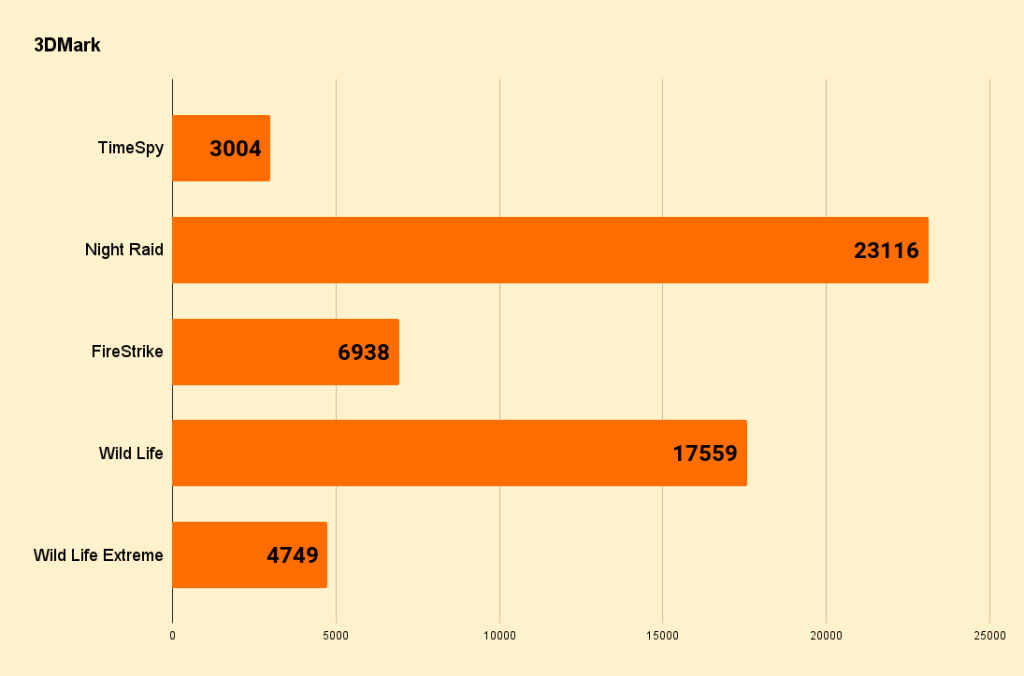
We start things off with synthetic GPU performance for which we use the 3DMark benchmark. This model comes with integrated Intel Arc Graphics. The Ultra 5 125U variant on the other hand comes with Intel Iris Xe. The difference between Iris Xe and Arc is pretty huge. We’ve already tested Intel Arc performance on a Core Ultra 7 155H, and we saw synthetic benchmark scores that were comparable to a discrete RTX 2050. The Ultra 5 125H isn’t too far behind either, easily performing as well as if not better than its 2-in-1 peers in the same price segment.
You can easily manage some light gaming on the laptop, but modern games will definitely struggle.
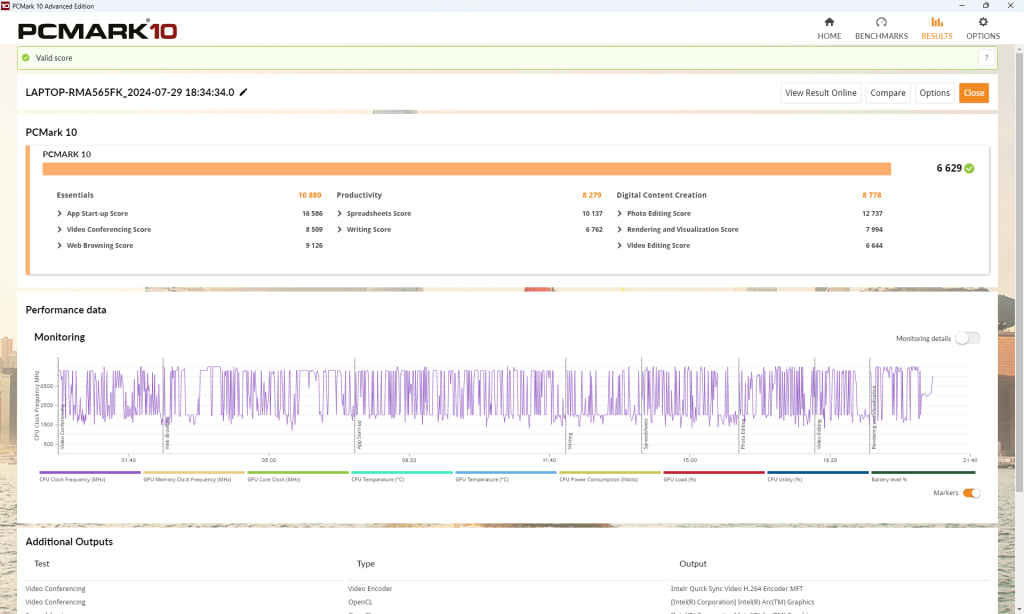
Coming to productivity, processor and general system performance, once again the Lenovo Yoga 7 2-in-1 offered great scores across the board. Here, we used PCMark 10 to test general productivity for everyday tasks, and Cinebench R23 and Geekbench 6 to test single thread and multi-thread performance.
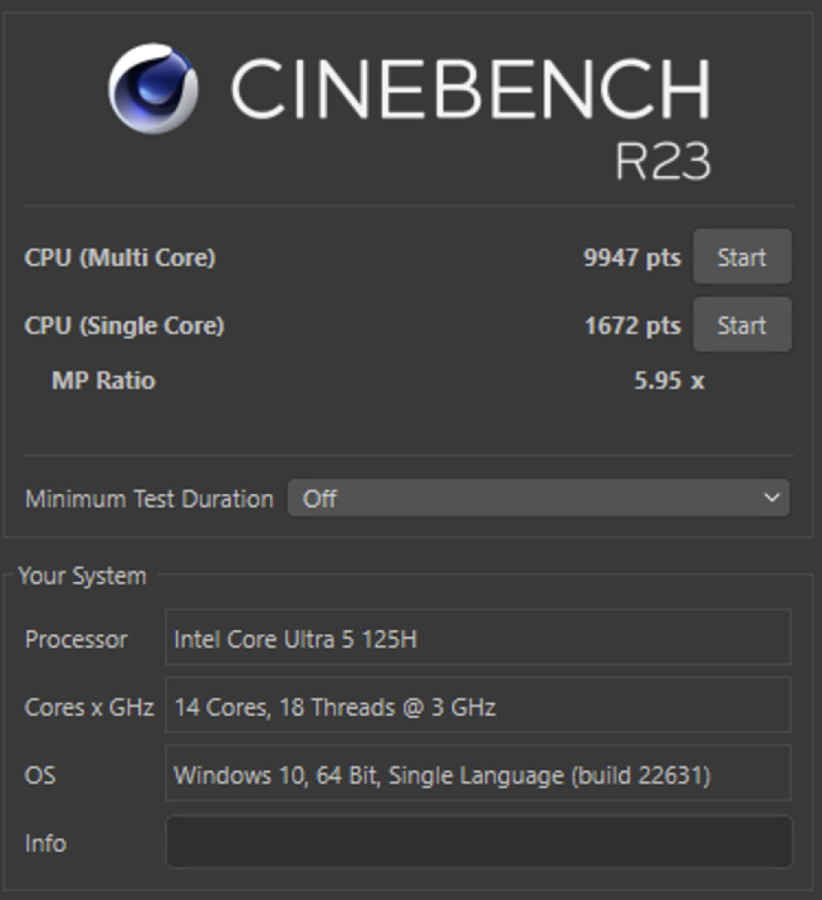
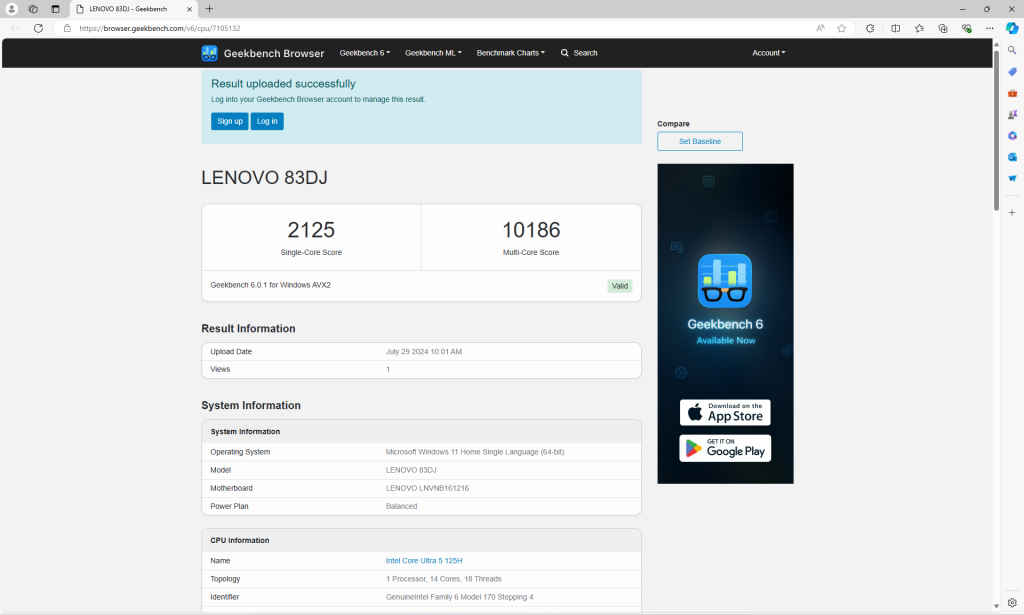
From our testing and time spent with the laptop, the Lenovo Yoga 7 2-in-1 can comfortably perform most everyday productivity and work-related tasks with ease. Media consumption, office applications, and even light editing and creative workloads are a breeze. Additionally, with an NPU onboard, you also have acceleration for AI-related tasks.
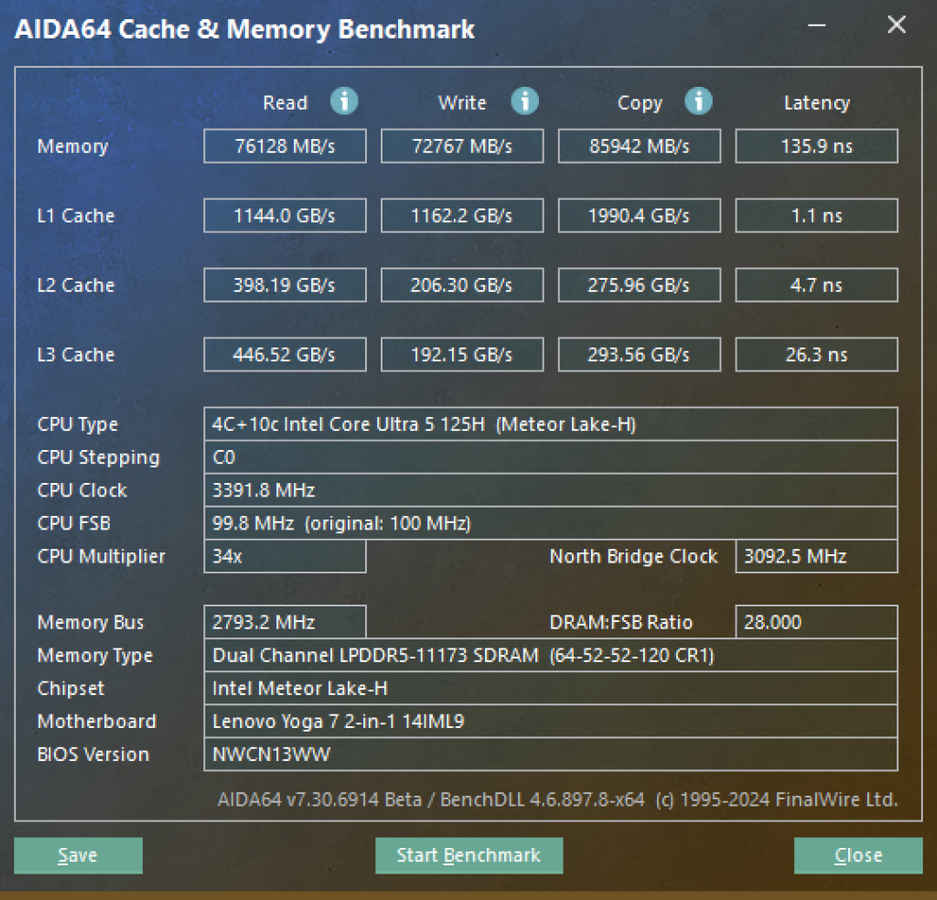
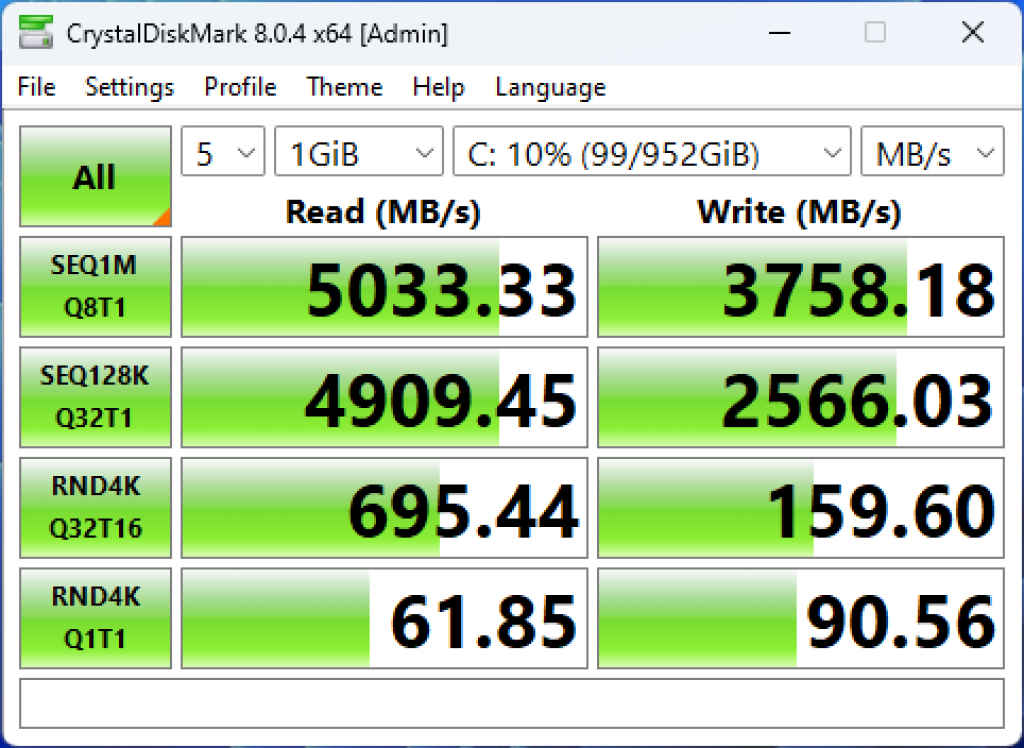
We used AIDA64 to test memory speeds and CrystalDiskMark to test storage speeds. In both cases they weren’t the fastest speeds we’ve seen in a 2-in-1 even in this price segment, but they’re nowhere near the worst either.
Battery Life
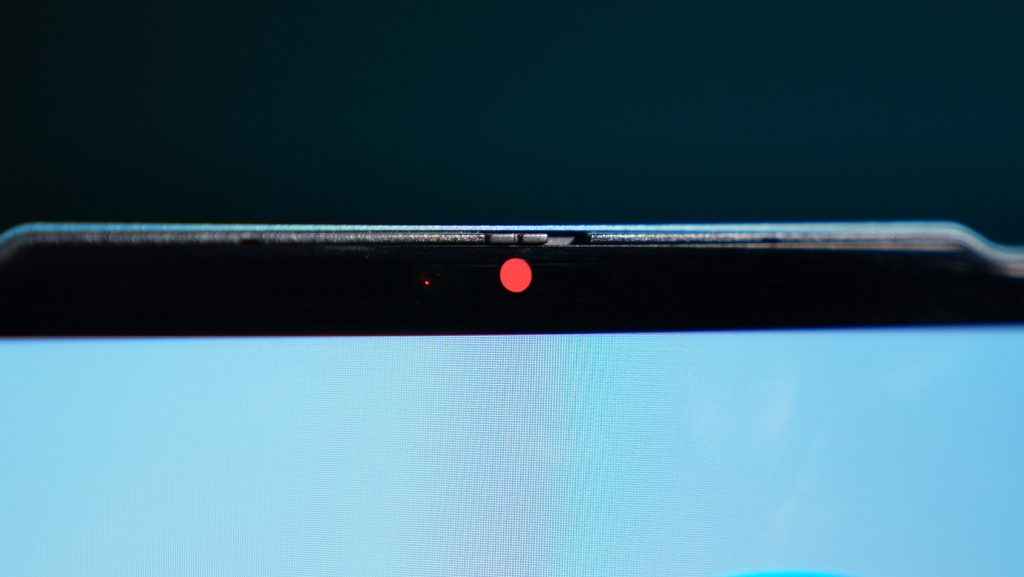
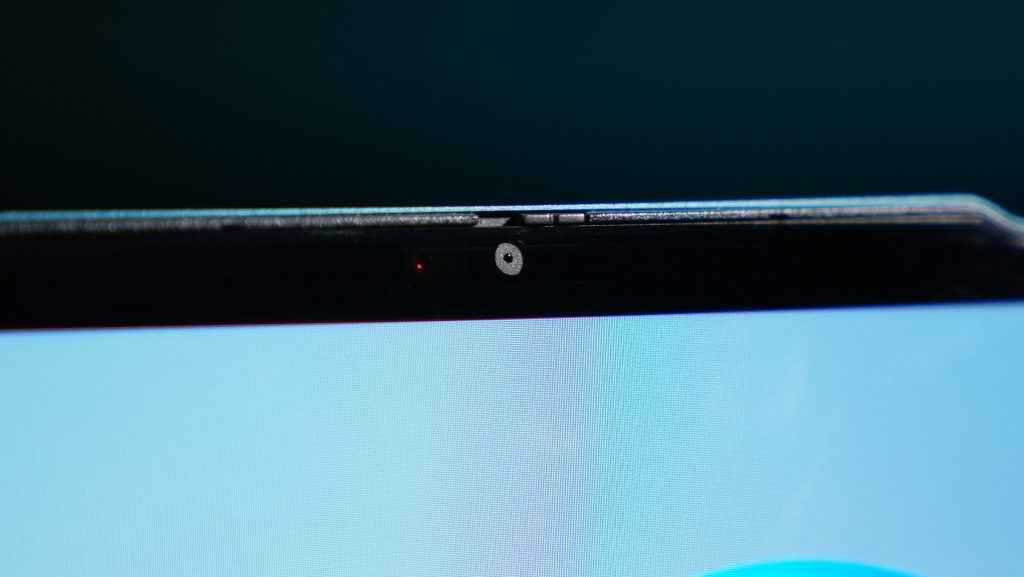
Coming to the battery life, the Yoga 7 lasted 15 hours and 20 minutes in our video loop test, which is impressive. Despite having the same battery capacity as its predecessor, the new Lenovo Yoga 7 2-in-1 has significantly improved battery life.
Thermals
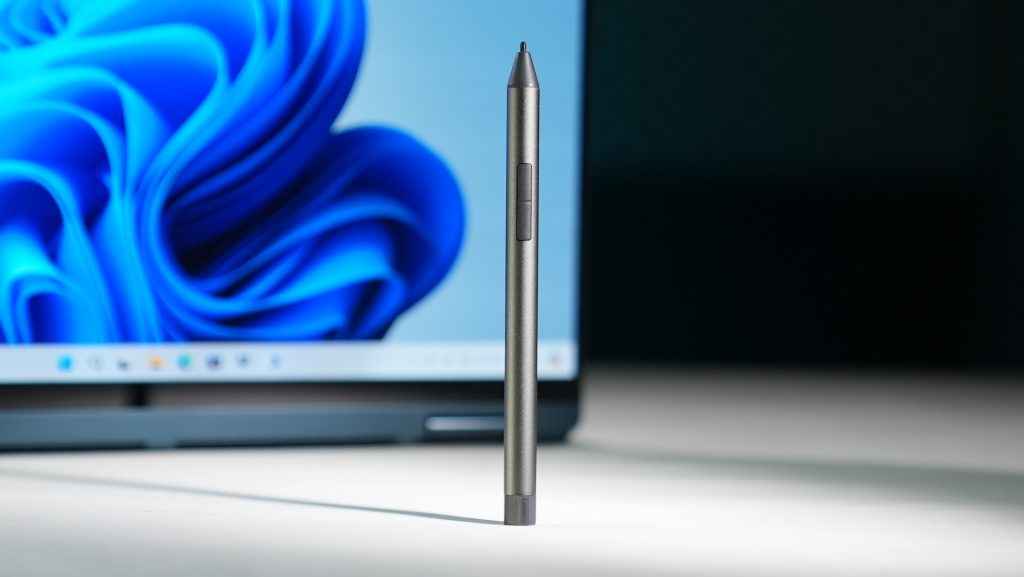
The Yoga 7 runs cool even while running fairly intensive tasks. The peak average surface temperature was just 29.7 degrees Celsius during our stress test. With the centre of the laptop, near the IJKL cluster hitting around 30.5 degrees Celsius.
Lenovo Yoga 7 2-in-1 Verdict
The Lenovo Yoga 7 2-in-1 14 combines a convertible form factor with a sturdy build, long battery life, and a capable modern CPU. It is a solid choice for anyone looking for powerful a 2-in-1 laptop for everyday use.
We will add that for ₹85,000, the base variant offers good value for money for what is on offer. While you don’t get the OLED display, the Core Ultra 5 125U in the base variant isn’t that much slower than the Ultra 5 125H in terms of performance. However, the OLED display on the Ultra 5 125H model we tested offers much crisper visuals and vibrant colours. If your use case demands the colour accurate OLED display – such as for photo or video editing, then the premium does shoot up.
That said, at ₹1,01,990 the Lenovo Yoga 7 is still competitively priced when compared to other similarly specced OLED 2-in-1s in the market right now and even manages to outperform pricier competitors.

